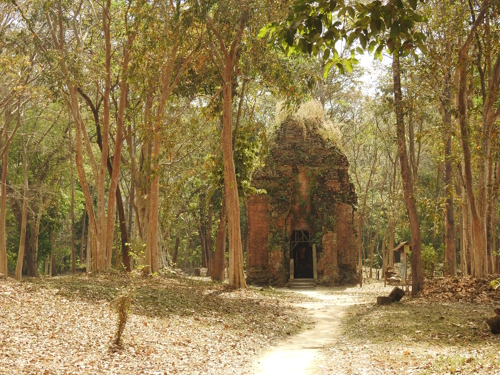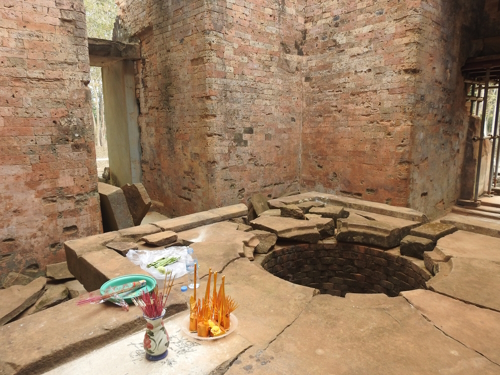Blog WHS Visits
WHS #827: Sambor Prei Kuk
Sambor Prei Kuk means "Many Temples in the Forest". And that precisely is what it is!
I spent 1.5 hours at the site, accompanied by a local guide, her dog, and my tuk-tuk driver from Kampong Thom who before had never been beyond the parking lot. The guides work for the area’s Community-Based Tourism organization, which also offers homestays and other activities (similar to those available at Banteay Chhmar). I found it worth it to hire a guide this time: the site is not really self-explaining and there are just a few boards with information. I also enjoyed hearing her take on tourism in this region and life in general in Cambodia’s countryside. The cost is 10 USD, in addition to the 10 USD entrance fee.
All temples here are Hindu and were specifically built for the worship of Shiva. The most common feature is the presence of the yoni. Unfortunately, a lot of the original interior statues have been looted or brought to museums in Phnom Penh and France.
The temples show some unique characteristics, as already pointed out by earlier reviewers. The octagonal shape of several of them for example, for which no Indian precedent is known. And the presence of 'Flying Palaces': carvings on the outer walls of the temples, which look like windows with deities or royal figures peering outside.
Rainwater reservoirs, which supplied the temples with water for their moats and for agricultural irrigation, can be seen as well. The temple area has a very large one, the others are outside of the walls.
The grumpy ICOMOS evaluation of the site (with Deferral advice) wanted the Cambodians to choose between the temples or the city. The excavations so far have focused on the temples and not too much is known yet about the ancient city, but I think the two are inseparable anyway – so why choose? There can be no doubt about the site's value: Angkor wouldn’t have been what it is without the stepping stone of the much earlier Sambor Prei Kuk.
Sambor Prei Kuk is just the kind of site that profits from World Heritage listing: it provides a boost for conservation and community-based tourism in a rural area of what is still one of the world’s least developed countries. They saw a real surge in visitors after the inscription in 2017, but then they had to close because of Covid. Tourists are now slowly returning, but not more than a handful of individual parties per day. Japanese and Cambodian restoration teams have been working to repair damages at several of the structures since 2021. During my visit, numerous buildings were under scaffoldings or forbidden to enter because of the danger of collapse (not that there would have been much to see inside).
Els - 12 February 2023


